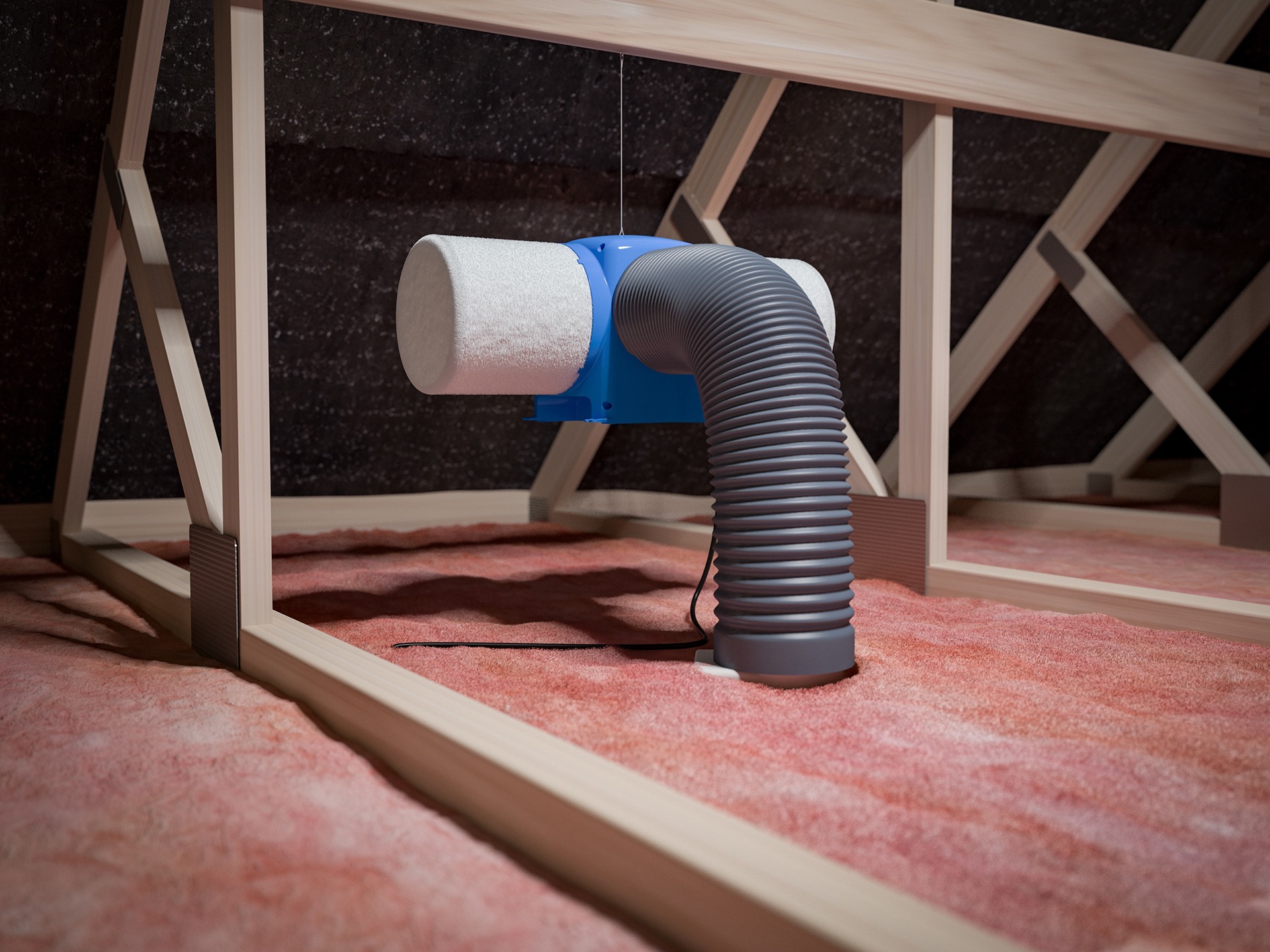Positive input ventilation: what is PIV and might it be useful in my home?
If you've got problems with condensation, a positive input ventilation system could be the solution...
A positive input ventilation (PIV) system (also known as positive pressure ventilation) is a mechanical ventilation system that pumps fresh air into the home to tackle damp and condensation and improve air quality.
In the past we relied on natural ventilation in our houses: opening doors and windows, and air escaping from leaky buildings. But contemporary building design emphasises the advantages of combining airtight homes with mechanical ventilation to reduce energy use and give greater control over air quality within the home. PIV is one type of mechanical ventilation.
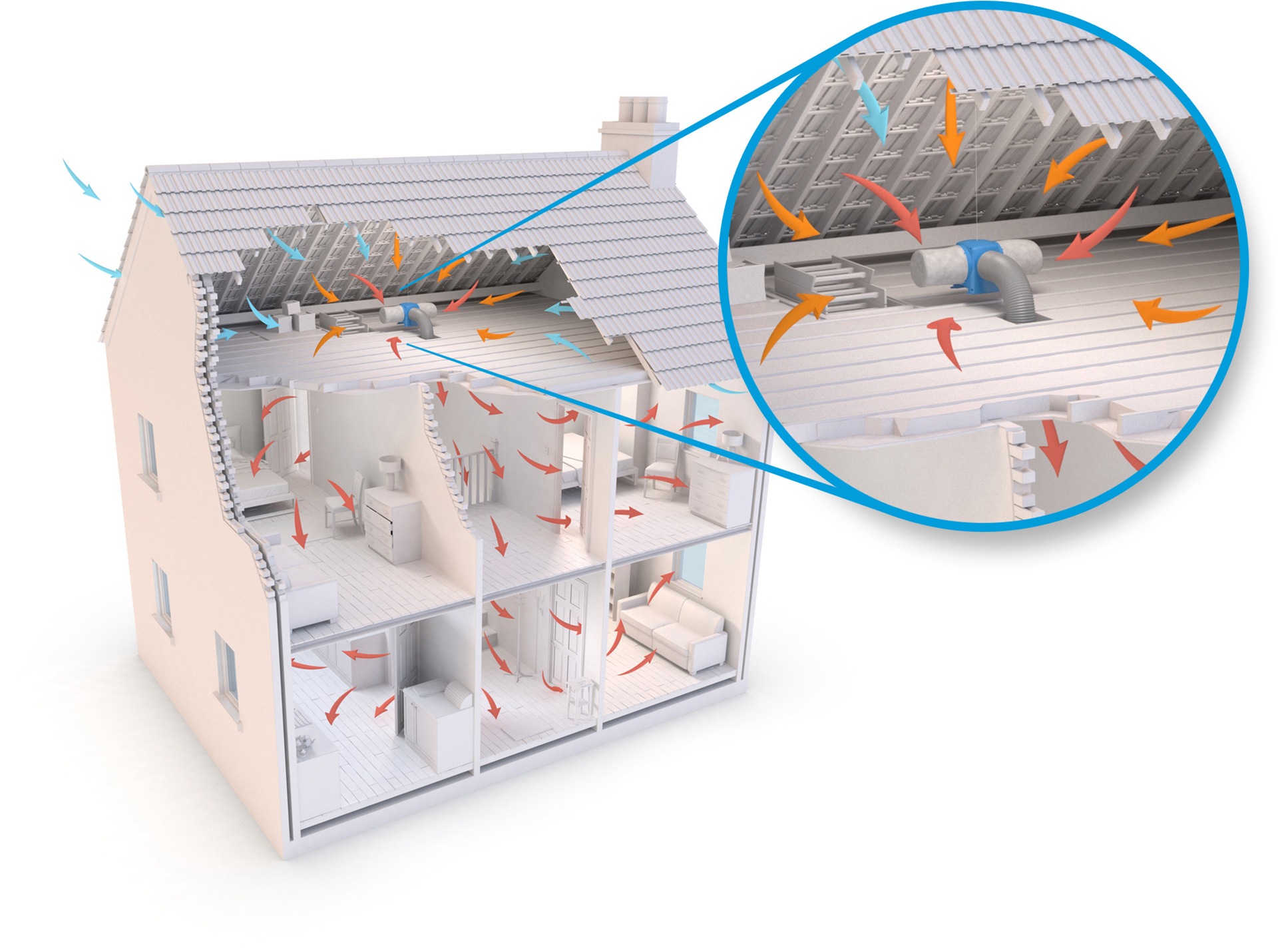
Image credit: Nuaire
How PIV works
A PIV unit is an air pump usually installed in the loft with a vent going down into the house. It draws fresh into the house through the loft and filters it before pumping it out through a diffuser into the house, usually in the ceiling of the upstairs hallway. As the PIV system pushes fresh air into the house, the stale, moist air in the property gets gently pushed out through gaps in the fabric of the building, trickle vents and so on.
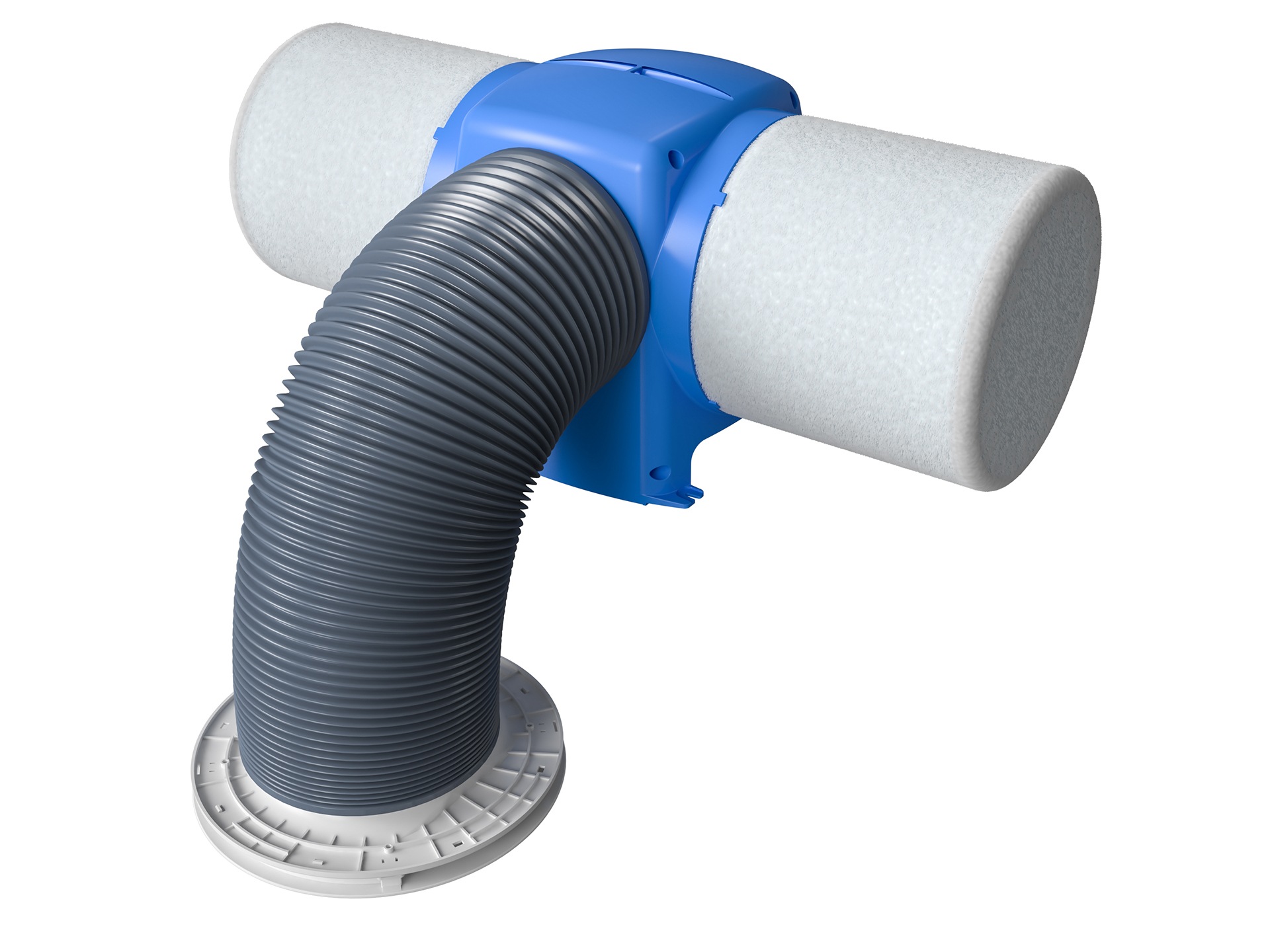
Image credit: Nuaire
The unit, which is basically a fan with two intakes covered in sock filters, can be hung in the loft or floor-mounted. (The hanging solution is probably better as that prevents vibrations from the fan being transmitted through the ceiling.) The vent from the unit runs down to the ceiling-mounted diffuser.
Improved air quality
All the air coming down into the house through the PIV diffuser has been filtered, so, depending on the grade of filter used, pollution and allergens, such as pollen are removed. Meanwhile, stale, humid air from inside the property is simultaneously being displaced and replaced by the fresh air. Together this results in improved air quality inside the home.
Reducing humidity in the home also reduces dust mites and mould: two more wins for air quality. And in areas prone to radon gas inside the home, this too can be reduced with the use of PIV. So, all in all, there can be a significant improvement in air quality.
Condensation
Condensation – and the mould it often causes – is a big problem for many households in this country in winter, and PIV units will usually successfully eliminate condensation.
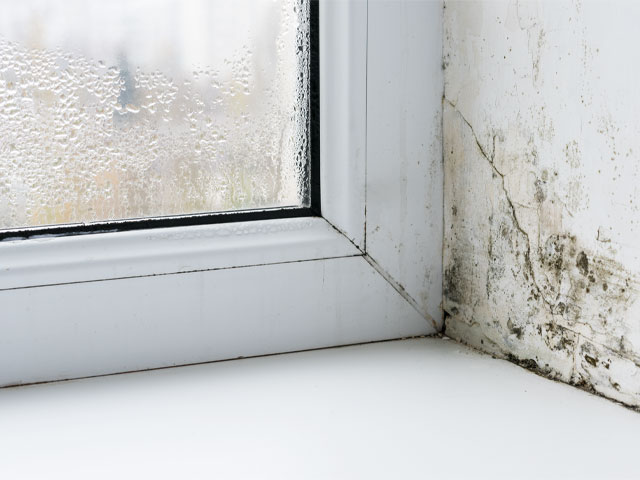
Image credit: Photo: Adobe/andrei310
Do you need a dehumidifier with a PIV system?
An alternative way of dealing with condensation would be using dehumidifiers. A dehumidifier would likely be more expensive to run, plus you wouldn’t get the benefits of the air filtering. But, it is also worth remembering that the way PIV systems work is by pushing heated air out of gaps in the building fabric. This is not great for your carbon footprint, and it is likely there will be some increase in your heating costs associated with the PIV.
Another new alternative to a PIV unit, which avoids the heat-loss problem and uses a minimally intrusive, loft-based system, is the dehumidifier with heat recovery, such as this system from ebac.
How much is a PIV unit?
PIV units cost between about £300 and £1000. If you are good at electrics, you can install one yourself. Otherwise it should be a quick and easy job for an electrician.
How much does PIV cost to run?
Basic PIV units require little power and cost very little to run, perhaps a couple of pence a day. However heated models will cost considerably more to run.
Which houses?
PIV aren’t really suitable for the newest, most highly airtight homes. For those, you need a full Mechanical Ventilation and Heat Recovery (MVHR) system. That’s because PIV relies on there being gaps in the fabric through which moist air is pushed out of the building; modern air-tight buildings are designed to trap air and reduce leakage.
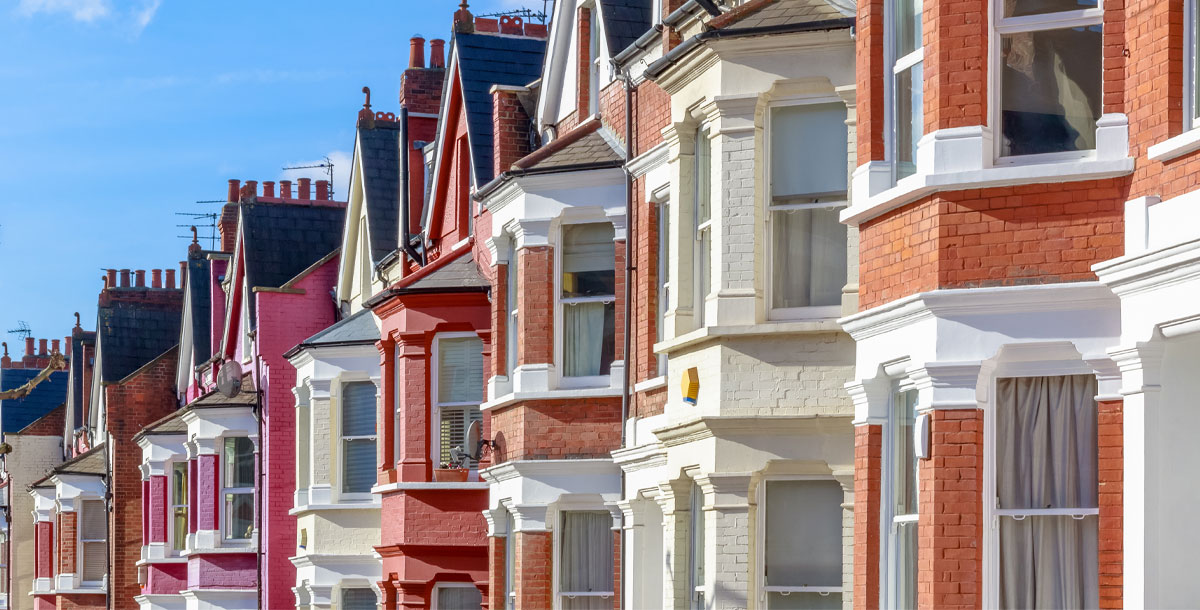
Image credit: I-Wei Huang / Adobe Stock
PIV is a good option for retrofitting in older homes that aren’t super airtight, and where there just isn’t the room for the ductwork associated with a MVHR set up. All that’s required to install a PIV is an electrical connection to the unit up in the loft and a single vent in the ceiling.
If your property is relatively modern and relatively airtight, you might need to install trickle vents on your windows to enable the positive air pressure created by the PIV to push the stale air out. Or you could go for dMEV fans in your bathrooms and kitchen. (These are the modern version of extractor fans, which run all the time very quietly using a very small amount of power.) Older properties tend to have enough existing gaps in the fabric where the stale air can escape.
Wall-mounted PIV units are available for flats and other homes without lofts.
In the loft
For the system to work, the loft needs to be well-ventilated so there’s a constant source of fresh air from outside the house to draw into the PIV. If the roof is constructed with traditional roofing felt you might need a couple of extra vents to allow for good air flow. Very old roofs with no felt and new ones with a membrane should both have enough airflow without modifications being needed.
Other things to check before you install a PIV:
- Make sure you don’t have an extractor fan with an output into the loft
- An uncovered water tank in the loft would mean the air in your loft is humid, so get it covered
- Check there are no leaky gas pipes or flues up there.
You will need to change the filters regularly, so you need to put the unit somewhere you can access relatively easily. It is vital the filters are changed regularly, otherwise the airflow will be restricted or, worse, you might end up pumping mould spores around your house if the filter goes mouldy.
The internal doors in your property shouldn’t be too well sealed otherwise it will make it hard for air to circulate within the house, on which the functioning of the PIV depends.
Will PIV make my house cold?
PIV can make your house colder in winter: if you are drawing air in from an unheated and floor-insulated loft in the middle of winter, in a cold climate, that air is going to be pretty cold. The way round this is to have a PIV with a heater attached. But, even then, the air coming into the house may still feel relatively cool.
This will increase the cost of running your PIV, but the heater will only need to be turned on during the coldest part of the winter. Make sure you get a unit where you can turn the heater off, or where the heater just kicks in automatically when the temperature falls below a certain level.
In summer, meanwhile, the air in your loft will be very warm. Then again, you might turn the system off in the warmer part of the year when condensation is not an issue anyway.
High-end PIV units have wireless remote-control and humidity and CO2 sensors positioned in the house, the readings from which are used to automatically adjust the system.
Is PIV noisy?
PIV units do make some noise, but they are pretty quiet. And they are in the loft. Hanging them up helps, as does putting them over the landing rather than immediately above your bedroom.

